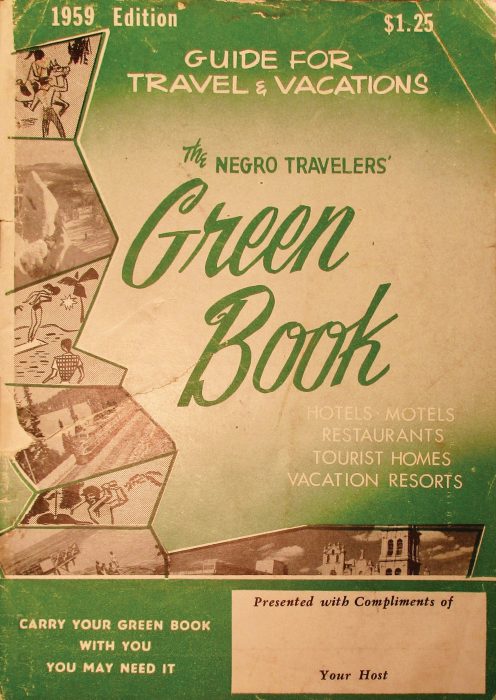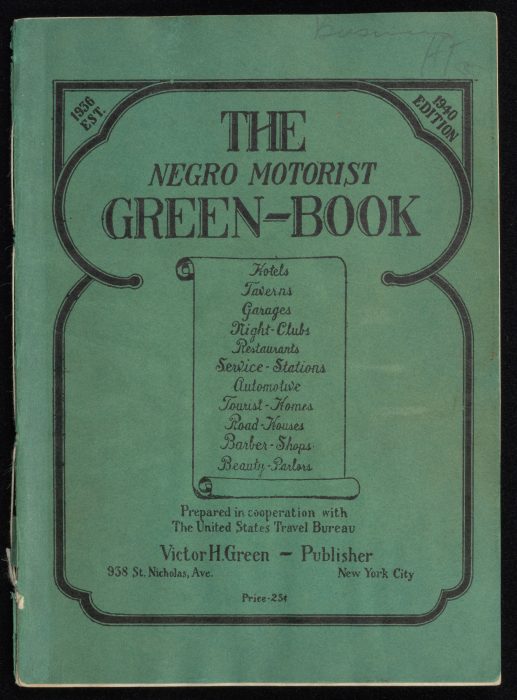Last Chance to see “The Negro Motorist Green Book” from SITES
It’s not every day we get the opportunity to have an exhibition from the Smithsonian Institution Traveling Exhibition Service (SITES) right in our own backyard.

“Green Book” cover, 1959.
Courtesy Schomburg Center for Research in Black Culture, Jean Blackwell Hutson Research and Reference Division, New York Public Library.
Learn more!
America’s love affair with the automobile has had its ups and downs, but piling the family into the car and heading off on a road trip is still a cherished tradition, despite the inevitable wail from the back seat, “Mom, I gotta go!”
But not long ago, the simple pleasure of a family drive was hardly carefree for Black Americans. Finding lodging, restaurants, even gas stations that would serve Black people was challenging and required careful planning.
The Negro Motorist Green Book highlights the history of The Green Book, an annual guide created in 1936 by Harlem postman Victor Green that helped African Americans travel the country with dignity by listing facilities that accepted blacks during the era of Jim Crow laws and segregation. The exhibition brings focus to a vibrant parallel world of African American businesses, the rise of the black leisure class in the United States and the important role The Green Book played in facilitating the second wave of the Great Migration.
How a little Green Book helped drive travelers to Black businesses

“Green Book” cover, 1940.
Courtesy Schomburg Center for Research in Black Culture, Jean Blackwell Hutson Research and Reference Division, New York Public Library.
Posted: 28 February 2025
-
Categories:
Collaboration , Education, Access & Outreach , History and Culture , Volunteer Voices



